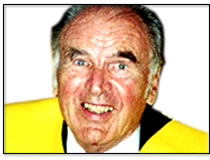

En esta sección se publicarán comentarios relativos a los artículos publicados en Endosurgery y sobre la revista en general. Las cartas remitidas al editor no deberán superar las 250 palabras. En el caso de los comentarios relativos a artículos se admitirá una figura o tabla descriptiva para ilustrar el contenido de la carta. La bibliografía de referencia no sobrepasará las cinco entradas. A la recepción de la carta, Endosurgery valorará el contenido de la misma y, en caso de considerar pertinente su publicación, enviará una copia de la misma al autor/autores del artículo original en cuestión, para asegurar el derecho a réplica en un escrito de similar extensión, que deberá ser remitido a Endosurgery en el plazo de un mes. La Carta a Endosurgery y la respuesta del autor/autores originales se publicarán juntas en el siguiente número de la revista. Pueden remitir sus cartas a: [email protected] .  My dear  colleagues
of the Spanish Society of Surgical Endoscopy, it is my great privilege
and honor to contribute to the first edition of your magazine. colleagues
of the Spanish Society of Surgical Endoscopy, it is my great privilege
and honor to contribute to the first edition of your magazine.
I performed the first endoscopic Appendectomy on May 30, 1980 at
Kiel University Hospital in Germany. The original technique with
Z suture closure according to By the early 1990’s, as laparoscopic surgery became accepted
in general surgery, I When the appendix is situated in the Orthrograde position, a coagulation
temperature of 110 degrees is recommended (diagram 1.2 A –
F ) Perhaps my schematic representations shown here may only be of historical value, but as Goethe said, “To see the future we must look to the past.” Thank you once again for remembering a pioneer who is enormously
proud of the work of many surgeons who have taken up the gauntlet
ensuring a safer, less painful, and equally effective surgery for
all patients. |
||
 |
||
 |
 |


